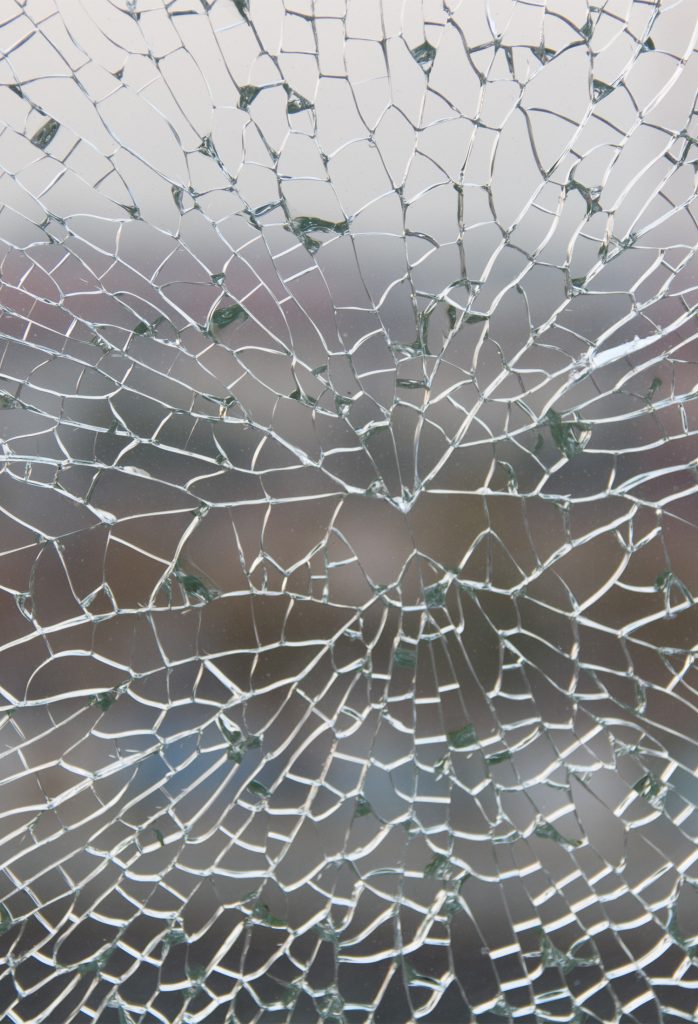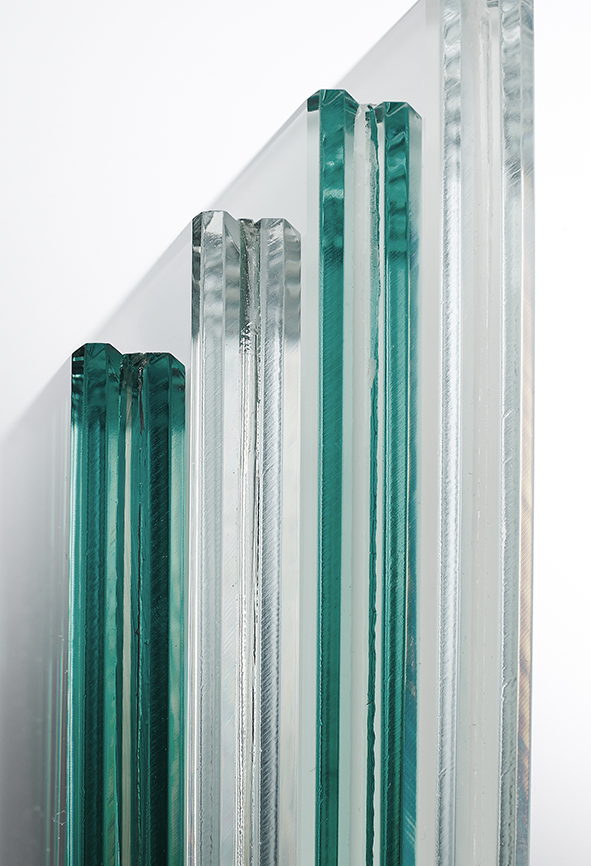Safety glass is used to avoid injuries from glass breakage, and is therefore required primarily in locations with a higher likelihood of such accidents.
There are two types of safety glass: so called tempered glazing and laminated glass. Each has features making it the better choice for certain requirements, yet they can also be combined when warranted by for instance differing safety requirements on the interior vs. the exterior of a building.
Tempered Glazing:
Tempered glazing shatters into many small bits when broken. The edges of the individual fragments are less than 3cm long and surprisingly blunt.
To achieve these properties, glass panes are subjected to high heat and then abruptly cooled. The surface of the glass cools faster than the inside, creating a tensile stress in the core and a compressive stress on the surface. This causes the glass to shatter into multiple small and harmless pieces should it break, and at the same time toughens the glass so that it is much less likely to break at all.
Laminated Glazing:
In laminated safety glass (LSG), two sheets of glass are joined by one or more interlayers that are typically tear-resistant. Permanently bonded to the glass, the interlayers hold the unit together and prevent individual glass fragments from tearing free in the event of breakage.
Interlayers with other properties, such as sound insulation or bullet resistance, can also be processed in laminated safety glass, allowing for very diverse applications.

